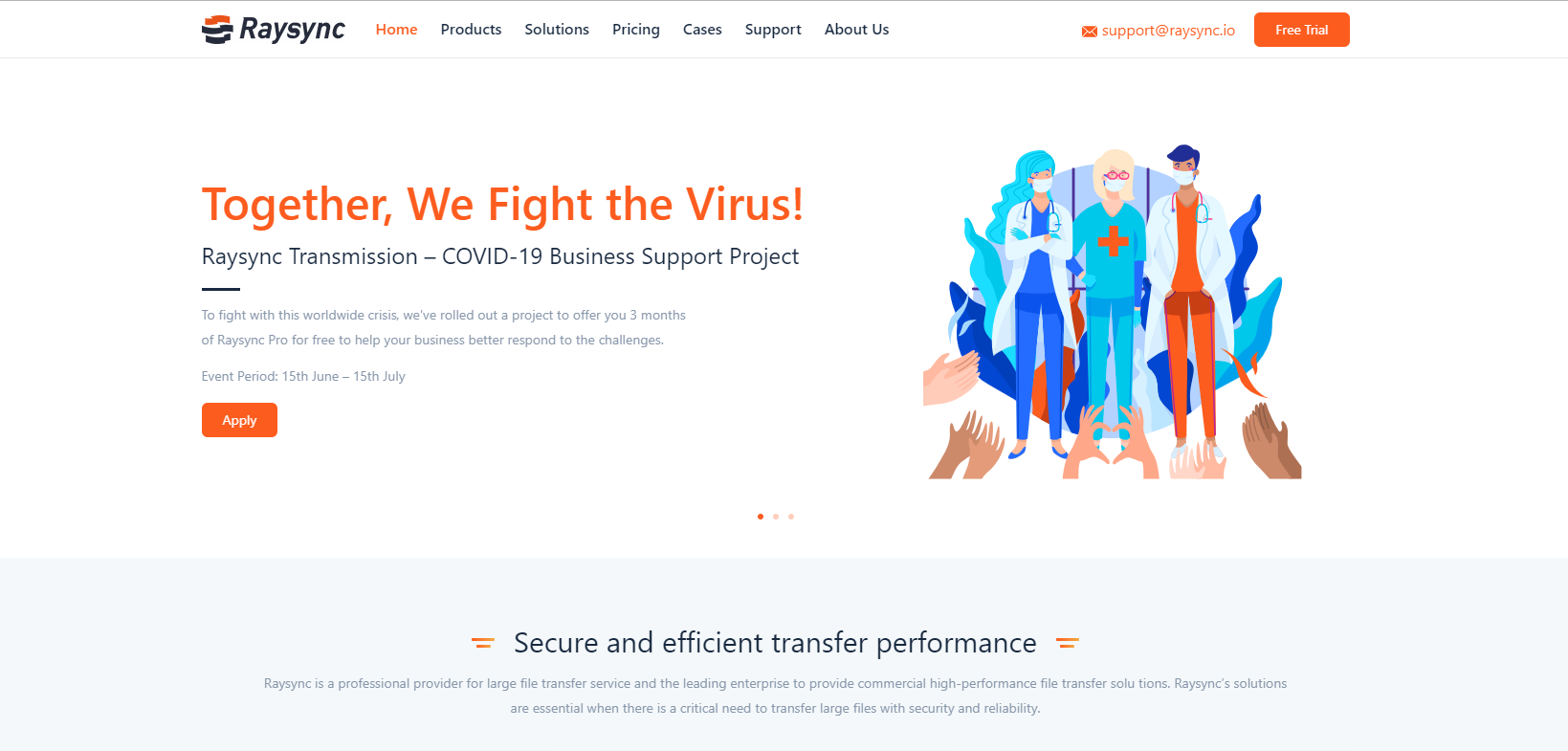How to efficiently solve the challenges of file transfer in the marine industry?
January 8, 2024As one of the main means of international trade and logistics, the maritime industry bears the burden of connecting continents and transporting bulk commodities and goods. The maritime industry is a crucial part of global business operations. This paper will emphasize the critical role of large file transfer in the marine industry and propose the best solution for seamless and secure data transfer in the maritime industry.
Part 1: Importance of File Transfer for Shipping Industry
Efficient and secure marine industry file transfer mechanisms serve as the backbone of the maritime sector, providing:
-
Security of File Transfer
In an era rife with cyber threats, ensuring the confidentiality and integrity of sensitive data during marine transmission remains paramount. This is crucial not only for safeguarding trade secrets but also for upholding the integrity of the maritime ecosystem.
-
Communication Efficiency
Swift and reliable file transfer for the maritime industry are pivotal for streamlined communication among diverse stakeholders within the maritime domain. Efficient communication facilitates prompt decision-making, enhancing operational agility.
-
Customer Service
Real-time and accurate data transfer plays a pivotal role in augmenting customer service. Providing clients with up-to-date information fosters trust and reliability, solidifying business relationships.
-
Cost Savings
Optimized file transfer processes of the marine industry contribute significantly to cost reduction within the marine industry. Minimized delays, improved operational efficiency, and risk mitigation directly impact the bottom line.
Part 2: Three Major Difficulties of Document Transmission in the Marine Industry
The maritime sector faces several challenges hindering efficient document transfer:
Limitations of Marine Communication Networks
-
Operating in remote and challenging environments, the maritime industry often encounters communication network limitations, impeding seamless data transfer between vessels, ports, and onshore entities.
Real-time Transmission of Marine Monitoring Data
-
Efficient transmission of real-time monitoring data, vital for vessel navigation, safety, and compliance, poses challenges due to network restrictions and varying data formats.
Lack of Reliable Data Transfer Guarantees
-
Reliability and consistency in data transfer are compromised due to the absence of robust guarantees. This affects critical operational processes and regulatory compliance.
Dynamically Changing Networks
-
The unpredictable nature of maritime networks, susceptible to fluctuations and interruptions, complicates the uninterrupted flow of data, impacting operational efficiency.
Part 3: The Best Solution for File Transfer in the Marine Industry - Raysync
Raysync emerges as an optimal solution for overcoming these challenges. Why choose Raysync as the best solution for file transfer in the marine Industry? Certainly! Here's an expansion and explanation of why Raysync stands out as the best solution for file transfer in the marine industry based on the mentioned points:
-
High-speed and Auto Data Sync Across the Network
Raysync offers lightning-fast file transfer speeds, crucial for the marine industry's need to swiftly exchange large volumes of data. Raysync's Self-developed protocol and optimized transfer algorithms ensure rapid data transmission, allowing shipping companies to efficiently share critical information, such as cargo manifests, shipping schedules, or real-time monitoring data. Additionally, Raysync's automatic data synchronization feature maintains consistency across distributed networks, ensuring that all involved parties have access to the most updated information in real time.
-
Stable Communication in Any Location
The marine industry operates in diverse and often remote locations, where network connectivity can be unreliable. Raysync's technology ensures stable communication even in challenging network environments. Through its robust and adaptive transfer protocols, it maintains file transfer stability regardless of geographical constraints or varying network conditions. This reliability is vital for uninterrupted communication among vessels, ports, and onshore operations, facilitating smooth data exchange and operational efficiency.
-
Secure Data Transfer
Security is paramount in the marine industry, where sensitive cargo information and operational data must be safeguarded. Raysync prioritizes data security through robust encryption protocols and comprehensive access controls. It adopted AES-256 bank-standard encryption technology and TLS data transmission encryption, supporting the breakpoint resume, retransmission, and multiple file verification (Hash, Rsync check), to ensure the integrity of data transfer. Additionally, features such as access management, audit trails, and data integrity checks bolster the security framework, enabling compliance with industry regulations and protecting against potential cyber threats.
-
Stable and Reliable Transfer
Raysync's emphasis on stability and reliability ensures that file transfers are consistently successful. Its error-checking mechanisms and retry strategies mitigate potential transfer interruptions or failures, guaranteeing that files reach their destinations intact and on time. This reliability minimizes the risks associated with data loss or delays, supporting efficient logistics management and operational continuity within the marine industry ecosystem.
Final Word
Efficient and secure file transfer of marine industry remains the linchpin of the marine industry. Addressing communication hurdles through reliable solutions such as Raysync not only enhances efficiency but also fortifies data security, thereby contributing to the marine industry's sustainable growth and resilience in a rapidly evolving landscape.
You might also like

Raysync News
April 13, 2021What you do when someone asks you to send large files over the internet? This article lists 10 free services to send large files in 2021 that you can refer to it.

Raysync News
July 3, 2020Large file transfer software come to help manage the internal operations of file sharing centers and facilitate communication among the enterprise. Here are the top 6 large file transfer software for your business.

Raysync News
June 28, 2020We have been talking about data integration, but that doesn't mean we all understand it. It seems simple to talk about data integration, but when we explain the definition, we will find many different explanations.